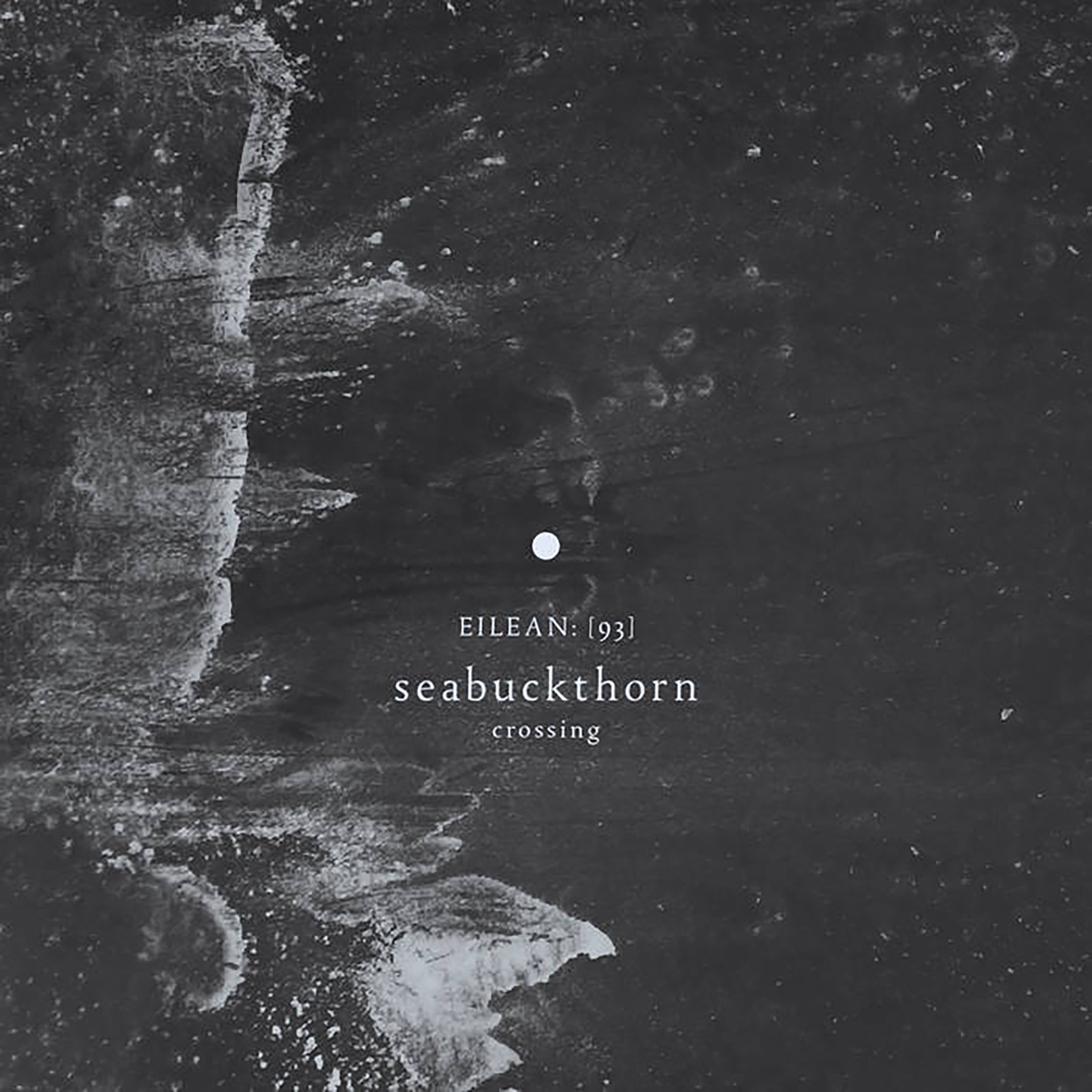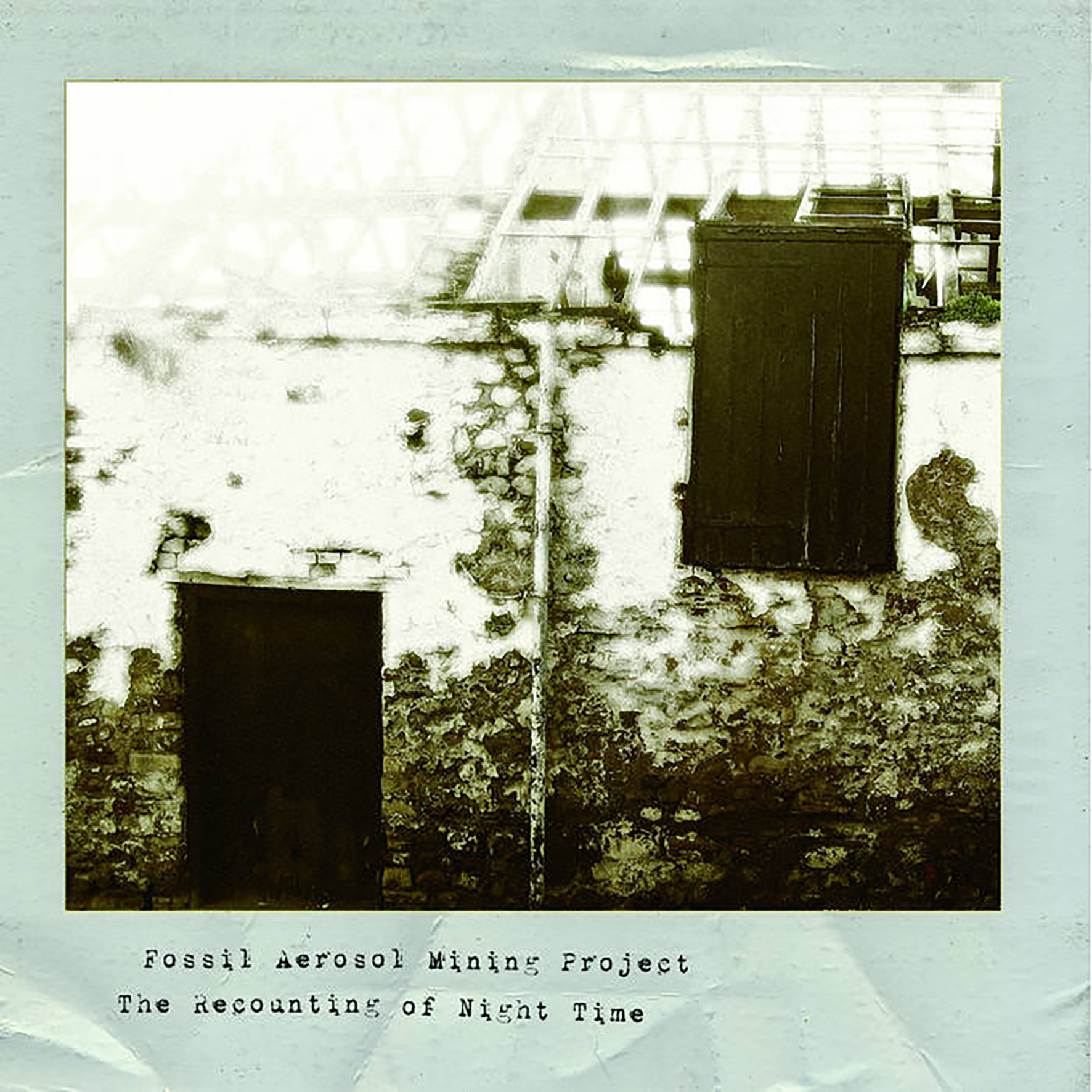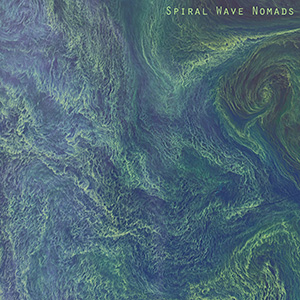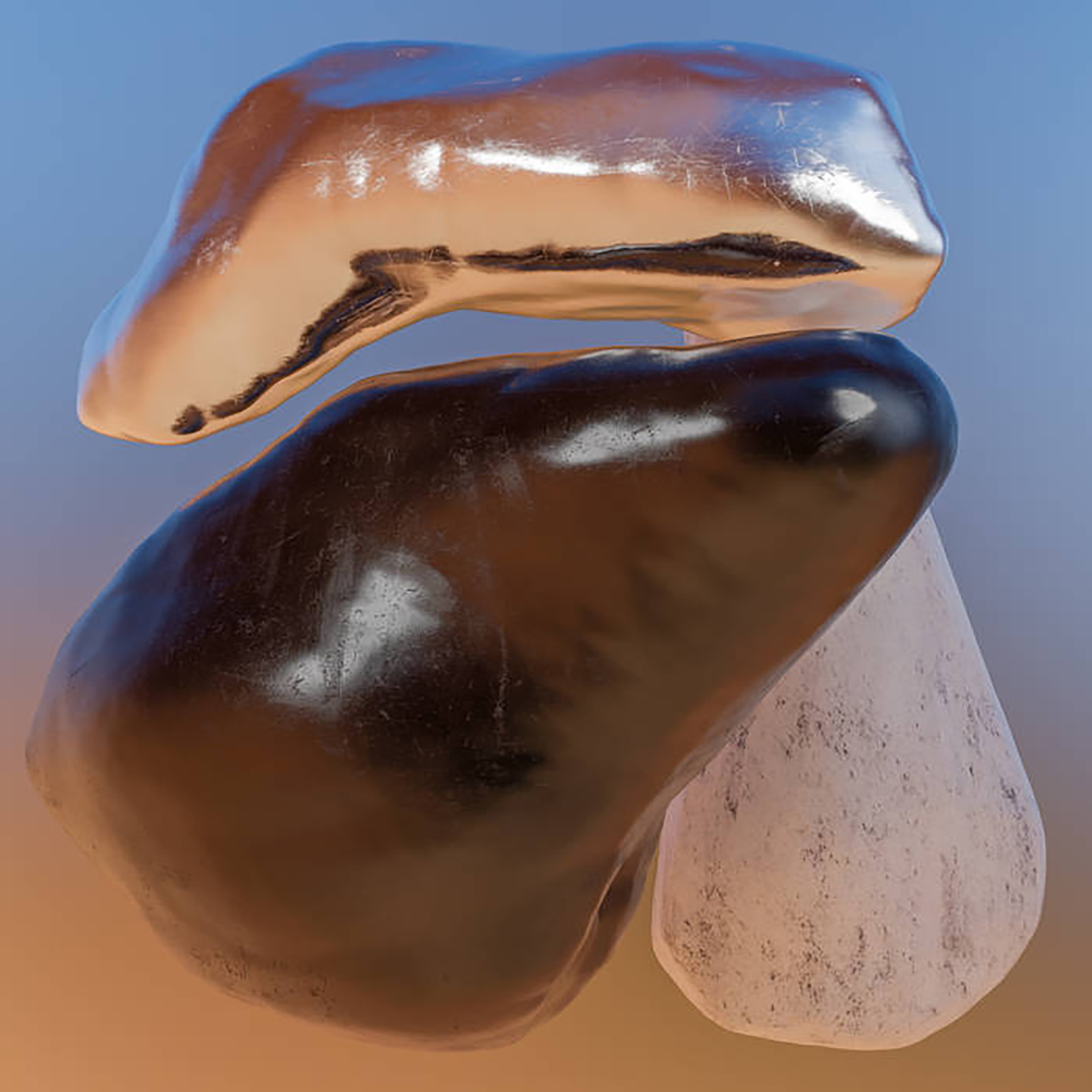 English guitarist Andy Cartwright's A House With Too Much Fire was one of the most striking and underappreciated albums of 2018, beautifully evoking a timeless and haunted-sounding strain of Americana. For his follow-up, the expectant father arguably allows a bit more light to creep into his vision, but plunges still deeper into the more experimental and atmospheric tendencies that made Too Much Fire so wonderful. In fact, Crossing sheds many of the more overt folk trappings of its predecessor, largely replacing the banjos and acoustic guitars with drones from a bowed resonator guitar (though the "Haunted Americana" sensibility remains very firmly in place). Despite its strong emphasis on mood and sustained tones, it would be a mistake to characterize Crossing as anything like a conventional drone album though, as Cartwright's closest kindred spirit at this stage of his career seems to be Richard Skelton. It does not quite resemble the actual Richard Skelton though–instead Crossing often approximates an alternate Skelton who veered towards increasingly warm, intimate, and bittersweet soundscapes rather than embracing the deeper themes and elemental power of the natural world. I certainly have ample room in my heart for both directions, especially when executed this masterfully.
English guitarist Andy Cartwright's A House With Too Much Fire was one of the most striking and underappreciated albums of 2018, beautifully evoking a timeless and haunted-sounding strain of Americana. For his follow-up, the expectant father arguably allows a bit more light to creep into his vision, but plunges still deeper into the more experimental and atmospheric tendencies that made Too Much Fire so wonderful. In fact, Crossing sheds many of the more overt folk trappings of its predecessor, largely replacing the banjos and acoustic guitars with drones from a bowed resonator guitar (though the "Haunted Americana" sensibility remains very firmly in place). Despite its strong emphasis on mood and sustained tones, it would be a mistake to characterize Crossing as anything like a conventional drone album though, as Cartwright's closest kindred spirit at this stage of his career seems to be Richard Skelton. It does not quite resemble the actual Richard Skelton though–instead Crossing often approximates an alternate Skelton who veered towards increasingly warm, intimate, and bittersweet soundscapes rather than embracing the deeper themes and elemental power of the natural world. I certainly have ample room in my heart for both directions, especially when executed this masterfully.
Two new shows just for you. We have squeezed out two extended release episodes for this weekend to get you through this week. They contain mostly new songs but there's also new issues from the vaults. The first show features music from Rider/Horse, Mint Field, Robert Aiki Aubrey Lowe, Anastasia Coope, ISAN, Stone Music, La Securite, Bark Psychosis, Jon Rose, Master Wilburn Burchette, Umberto, Wand, Tim Koh, Sun An, and Memory Drawings. The second episode has music by Laibach, Melt-Banana, Chuck Johnson, X, K. Yoshimatsu, Dorothy Carter, Pavel Milyakov, Violence Gratuite, Mark Templeton, Dummy, Endon, body / negative, Midwife, Alberto Boccardi, Divine. Cow in Maui from Veronika in Vienna. Get involved: subscribe, review, rate, share with your friends, send images! |



 This unusual reissue quietly entered the world last December when everyone was frantically obsessing over the year-end lists and features, so it did not get nearly the attention it deserved. It is certainly an odd release for a couple of reasons, but the most obvious one is that a 35-year-old album of bird songs was resurrected by a record label best known for avant-garde and experimental music. The other is that Birds of Venezuela was just one of over one hundred albums recorded and released by French ornithologist Jean-Claude Roché. That naturally begged the questions "What makes this album the special one?" and "Who exactly is this for?". As it turns out, the liner notes by David Toop answer the former and the album itself decisively answered the latter: this album is for me because it is amazing. In fact, Toop actually started planning a trip to the Amazon soon after hearing this Birds of Venezuela and I probably would have done the same, as a strong case could be made that the most texturally and melodically compelling music scene of the mid-‘70s was the Venezuelan rain forests.
This unusual reissue quietly entered the world last December when everyone was frantically obsessing over the year-end lists and features, so it did not get nearly the attention it deserved. It is certainly an odd release for a couple of reasons, but the most obvious one is that a 35-year-old album of bird songs was resurrected by a record label best known for avant-garde and experimental music. The other is that Birds of Venezuela was just one of over one hundred albums recorded and released by French ornithologist Jean-Claude Roché. That naturally begged the questions "What makes this album the special one?" and "Who exactly is this for?". As it turns out, the liner notes by David Toop answer the former and the album itself decisively answered the latter: this album is for me because it is amazing. In fact, Toop actually started planning a trip to the Amazon soon after hearing this Birds of Venezuela and I probably would have done the same, as a strong case could be made that the most texturally and melodically compelling music scene of the mid-‘70s was the Venezuelan rain forests. This inscrutable cabal of post-industrial scavengers continues to burrow into our murky cultural subconscious with a pair of minor new releases. Characteristically, both albums are heavily conceptual and mystery-shrouded, but The Recounting of Night Time at least volunteers that it "focuses principally on a certain piece of German gothic cinema made during the late 1970s." That certainly seems to suggest that a badly worn VHS of Werner Herzog's Nosferatu is at the heart of the sounds, but Fossil Aerosol Mining Project are (as always) far more interested in what time has done to the physical media than than whatever that media's original intended content was. About the superior Archeological Testing in the Land of Monkeys, even less is revealed ("A fatigued response to reminders of a cyclical past, surprisingly exaggerated in the years of the rooster and the dog"). Both releases offer their flashes of inspiration, but it is the digital-only and conceptually vague Archeological Testing that unexpectedly feels like some of the collective's finest work to date.
This inscrutable cabal of post-industrial scavengers continues to burrow into our murky cultural subconscious with a pair of minor new releases. Characteristically, both albums are heavily conceptual and mystery-shrouded, but The Recounting of Night Time at least volunteers that it "focuses principally on a certain piece of German gothic cinema made during the late 1970s." That certainly seems to suggest that a badly worn VHS of Werner Herzog's Nosferatu is at the heart of the sounds, but Fossil Aerosol Mining Project are (as always) far more interested in what time has done to the physical media than than whatever that media's original intended content was. About the superior Archeological Testing in the Land of Monkeys, even less is revealed ("A fatigued response to reminders of a cyclical past, surprisingly exaggerated in the years of the rooster and the dog"). Both releases offer their flashes of inspiration, but it is the digital-only and conceptually vague Archeological Testing that unexpectedly feels like some of the collective's finest work to date. Laurent Jeanneau's work as Kink Gong has been one of the most compellingly quixotic and unique projects in underground music for almost two decades, but I have only recently begun to scratch the surface of his mountain of work. He is probably best known as a prolific ethnomusicologist, occasionally surfacing on Sublime Frequencies. He has also self-released over 150 collections of ethnic minority music recorded during his many travels throughout Africa, China, and Southeast Asia. Naturally, that restless curiosity has made a deep impact on Jeanneau's own sensibility as an artist, resulting in a series fairly uncategorizable collage-based soundscape albums like this landmark 2013 release. At the root of Voices are a host of recordings of indigenous vocalists made in China, Vietnam, and Laos, but Jeanneau ingeniously transforms them into a haunting, otherworldly, and timeless vision that blurs the boundaries of tradition, experimentation, art, and reality.
Laurent Jeanneau's work as Kink Gong has been one of the most compellingly quixotic and unique projects in underground music for almost two decades, but I have only recently begun to scratch the surface of his mountain of work. He is probably best known as a prolific ethnomusicologist, occasionally surfacing on Sublime Frequencies. He has also self-released over 150 collections of ethnic minority music recorded during his many travels throughout Africa, China, and Southeast Asia. Naturally, that restless curiosity has made a deep impact on Jeanneau's own sensibility as an artist, resulting in a series fairly uncategorizable collage-based soundscape albums like this landmark 2013 release. At the root of Voices are a host of recordings of indigenous vocalists made in China, Vietnam, and Laos, but Jeanneau ingeniously transforms them into a haunting, otherworldly, and timeless vision that blurs the boundaries of tradition, experimentation, art, and reality. Each new Richard Skelton release is a bit of a surprise these days, as his aesthetic is in a permanent state of flux shaped by where he is living and what he is thinking about at any given time. For the most part, his more divergent and experimental forays tend to surface as digital-only releases, but this physical release explores the least expected direction of all: a return to the more melodic, song-based aesthetic of his classic Type LPs from a decade ago. Obviously, Skelton is quite a different artist now than he was back then, so Border Ballads not a return so much as it is a very different vision ("telluric, grounded, earthen") rooted in a semi-familiar structure. Given that Landings and Marking Time were the Skelton albums that I first fell in love with, it is very hard to maintain any semblance of objectivity with this long-delayed sequel (of sorts). It feels like Border Ballads recaptures the transcendent magic of its predecessors only fitfully though, as its deep melancholy feels more like a somber, earthbound elegy than an ecstatic catharsis.
Each new Richard Skelton release is a bit of a surprise these days, as his aesthetic is in a permanent state of flux shaped by where he is living and what he is thinking about at any given time. For the most part, his more divergent and experimental forays tend to surface as digital-only releases, but this physical release explores the least expected direction of all: a return to the more melodic, song-based aesthetic of his classic Type LPs from a decade ago. Obviously, Skelton is quite a different artist now than he was back then, so Border Ballads not a return so much as it is a very different vision ("telluric, grounded, earthen") rooted in a semi-familiar structure. Given that Landings and Marking Time were the Skelton albums that I first fell in love with, it is very hard to maintain any semblance of objectivity with this long-delayed sequel (of sorts). It feels like Border Ballads recaptures the transcendent magic of its predecessors only fitfully though, as its deep melancholy feels more like a somber, earthbound elegy than an ecstatic catharsis. Plantasia has become a well-known record despite a limited initial 1976 release to anyone buying a houseplant from the Mother Earth store in Los Angeles. This was music for plant owners to create an environment of optimal growth - simple haunting melodies composed on a moog.
Plantasia has become a well-known record despite a limited initial 1976 release to anyone buying a houseplant from the Mother Earth store in Los Angeles. This was music for plant owners to create an environment of optimal growth - simple haunting melodies composed on a moog. Spiral Wave Nomads is the newly formed duo of multi-instrumentalist Eric Hardiman (Rambutan, Century Plants, Burnt Hills) and drummer Michael Kiefer (More Klementines). As a new duo, their first record is surprisingly a fully formed excursion: an excellent balance of structure and improvisation, and a sound that never stands still, but also demonstrates consistency and focus from song to song. The final product is a complex, yet entirely enjoyable suite of enveloping psychedelia that engages without bludgeoning.
Spiral Wave Nomads is the newly formed duo of multi-instrumentalist Eric Hardiman (Rambutan, Century Plants, Burnt Hills) and drummer Michael Kiefer (More Klementines). As a new duo, their first record is surprisingly a fully formed excursion: an excellent balance of structure and improvisation, and a sound that never stands still, but also demonstrates consistency and focus from song to song. The final product is a complex, yet entirely enjoyable suite of enveloping psychedelia that engages without bludgeoning. While a series of archival live releases have appeared recently, the self-titled BLOODYMINDED is the first new studio material from the legendary Chicago noise/power electronics project since 2013’s Within the Walls. It also marks the first time that all six permanent members of the international band: Xavier Laradji, Will Lindsay, James Moy, Isidro Reyes, Pieter Schoolwerth, and de facto band leader Mark Solotroff have recorded together at the same location. This was heralded by a live performance just before the few crew entered the studio (released as The Struggle of Togetherness, but live BLOODYMINDED is a very different beast.  On stage they are a writhing mass of black leather, cheap plastic synths, and far more microphones than necessary. The result is the deconstruction of rock show clichés complete with between song banter and dedications, some of which are longer in duration than the song itself, which may be just a five second blast of synth. In the studio, however, the thematic depth and obsessive attention to sonic detail is much more obvious, resulting in the band's best work to date.
While a series of archival live releases have appeared recently, the self-titled BLOODYMINDED is the first new studio material from the legendary Chicago noise/power electronics project since 2013’s Within the Walls. It also marks the first time that all six permanent members of the international band: Xavier Laradji, Will Lindsay, James Moy, Isidro Reyes, Pieter Schoolwerth, and de facto band leader Mark Solotroff have recorded together at the same location. This was heralded by a live performance just before the few crew entered the studio (released as The Struggle of Togetherness, but live BLOODYMINDED is a very different beast.  On stage they are a writhing mass of black leather, cheap plastic synths, and far more microphones than necessary. The result is the deconstruction of rock show clichés complete with between song banter and dedications, some of which are longer in duration than the song itself, which may be just a five second blast of synth. In the studio, however, the thematic depth and obsessive attention to sonic detail is much more obvious, resulting in the band's best work to date. I have only been familiar with William Ryan Fritch's work for a couple of years, but he became one of my absolute favorite artists almost instantly. In fact, I have such unshakable faith in his vision that I even pounced on this lavish collection of works for film despite my similarly unshakable apathy towards soundtrack albums. My rational was that his first major release in two years had to be something truly special and the handful of pieces released in advance of the album seemed to bear that out. As it happens, the rest of this double album is every bit as wonderful as those teasers: Deceptive Cadence may very well be Fritch’s career-defining masterpiece. It certainly deserves to be, as Fritch approached it as a true labor of love, tirelessly revisiting, reworking, and paring down years of disparate projects until he had a gorgeously bittersweet tour de force of sublime grandeur.
I have only been familiar with William Ryan Fritch's work for a couple of years, but he became one of my absolute favorite artists almost instantly. In fact, I have such unshakable faith in his vision that I even pounced on this lavish collection of works for film despite my similarly unshakable apathy towards soundtrack albums. My rational was that his first major release in two years had to be something truly special and the handful of pieces released in advance of the album seemed to bear that out. As it happens, the rest of this double album is every bit as wonderful as those teasers: Deceptive Cadence may very well be Fritch’s career-defining masterpiece. It certainly deserves to be, as Fritch approached it as a true labor of love, tirelessly revisiting, reworking, and paring down years of disparate projects until he had a gorgeously bittersweet tour de force of sublime grandeur. Luke Younger has been increasingly ambitious in reinventing the Helm aesthetic with each fresh release over the last several years, but this latest release still caught me off-guard a bit: the bulk of Chemical Flowers is very different from the killer single ("I Knew You Would Respond") that preceded its release. To some degree, that admittedly fits Younger's pattern, as each of his EPs tends to feature one brilliant centerpiece surrounded by the more expected post-industrial sound collages. Though it is a full-length (and one that features string arrangements from JG Thirlwell), Chemical Flowers more or less replicates that same approach by simply doubling the amount of collages. That is perfectly fine by me, as I tend to enjoy Younger's abstract side almost as much as his beat-driven side and he is in especially fine form here. These collages are quite a bit different than usual though, as it sounds like there are a handful of '70s or '80s New Age/ambient albums lurking at the heart of Flowers that have been scorched, warped, and mangled beyond recognition.
Luke Younger has been increasingly ambitious in reinventing the Helm aesthetic with each fresh release over the last several years, but this latest release still caught me off-guard a bit: the bulk of Chemical Flowers is very different from the killer single ("I Knew You Would Respond") that preceded its release. To some degree, that admittedly fits Younger's pattern, as each of his EPs tends to feature one brilliant centerpiece surrounded by the more expected post-industrial sound collages. Though it is a full-length (and one that features string arrangements from JG Thirlwell), Chemical Flowers more or less replicates that same approach by simply doubling the amount of collages. That is perfectly fine by me, as I tend to enjoy Younger's abstract side almost as much as his beat-driven side and he is in especially fine form here. These collages are quite a bit different than usual though, as it sounds like there are a handful of '70s or '80s New Age/ambient albums lurking at the heart of Flowers that have been scorched, warped, and mangled beyond recognition.
